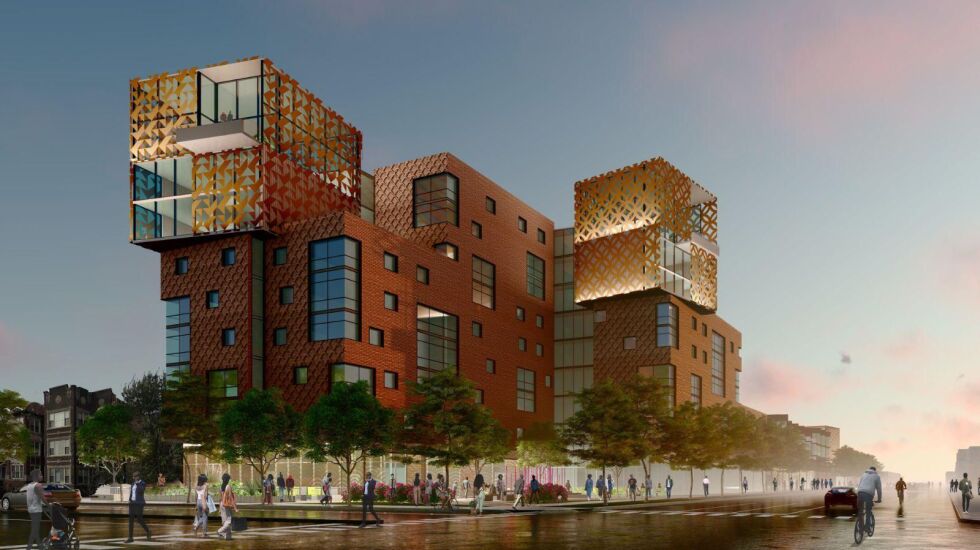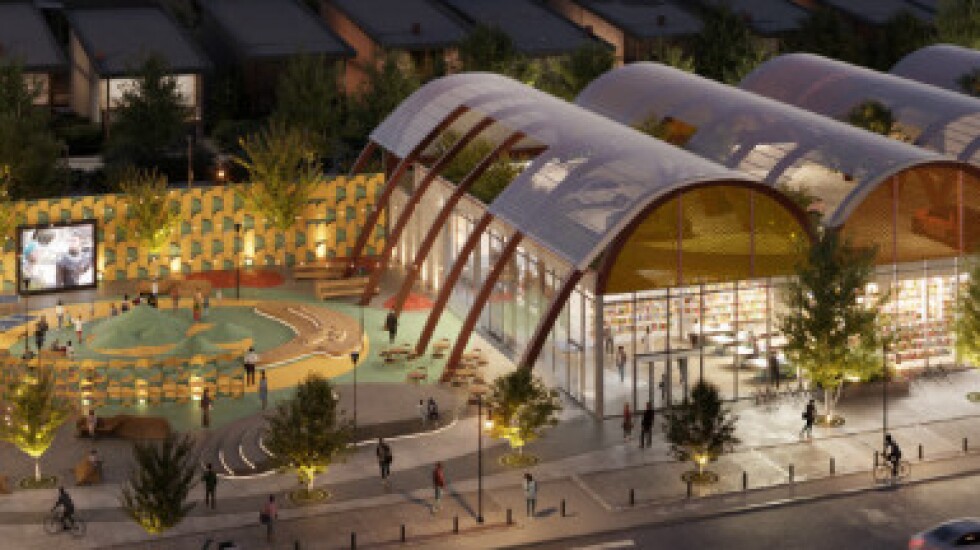
In 2022, city officials took a decisive but controversial step in dealing with a growing food desert on the West Side.
Former Mayor Lori Lightfoot’s administration got authority from the City Council to acquire a shuttered Aldi supermarket at 3835 W. Madison St. for $700,000. The grocer angered many in West Garfield Park when it closed the store in 2021, citing its unusually high expenses, much of it owing to theft and security.
It reignited a long-running discussion. When retailers, especially food stores, pull out of a poor Black community plagued by gangs and guns, is it a racist act or just sensible capitalism?
Whatever you think about that, ensuring the availability of fresh fruits and vegetables is bound closely to broader efforts behind community improvement.
So city officials took a “big picture” approach once they got title to the block-long parcel on the south side of Madison from Springfield Avenue to Hamlin Boulevard. The tract included the old 15,000-square-foot Aldi and its parking lot.
When the store closed, it left behind a stretch of decay on a commercial street that could be a showcase. Next to beautiful Garfield Park, the block should be an attractive place to live and do business.
The Department of Planning and Development put out a “request for qualifications” for the property, its way of saying to developers and ambitious community groups, “Send us your best ideas, and we’ll consider a deal for this property.”
The agency, which has no commissioner, revealed two responses to its call last week. Details are online, and the agency will gather community feedback in the weeks ahead. A spokesman said a decision about who gets the site could come by year-end.
Both proposals hew closely to the city’s overall guideline seeking a mixed-use development with a grocer as an anchor. In each case, the proposals would group affordable housing closest to the two corners.
Still to be seen is whether either project team can finance a deal, even with city subsidies. Many hurdles await, including the competition for low-income housing tax credits. Each proposal pencils in about $20 million in city subsidies, probably the bulk from tax-increment financing.

One plan goes by the name Garfield Gather and comes from The Community Builders, a nonprofit with operations in several states, and West Side United. The $86.4 million plan calls for 101 housing units in two phases, bracketing a 9,500-square-foot grocery. It would include 67 parking spaces, a public plaza and additional retailers. Design firms are Canopy and Brook Architecture.
The other plan would deliver 88 housing units and a somewhat larger grocer and café at 13,800 square feet. The estimated $78.1 million complex labeled Westgate allows for apartments and townhomes, public space and 66 parking spaces. The proponents are prominent developer Elzie Higginbottom’s East Lake Management, Citizens Building a Better Community, TruDelta and Project Forward, with architects Valerio Dewalt Train and Latent Design.
Mike Tomas, executive director of the Garfield Park Community Council, said he’s impressed by both plans. The teams have worked with his group on encouraging homegrown grocers, he said.
The Garfield Gather team proposes conventional concrete treatments for its residential buildings, reserving the design flourish for the grocery, which gets a rounded roof that’s supposed to be equipped for solar power. Facades use colors associated with African American culture.
Sponsors emphasized they have contacts with grocers dedicated to the community. Starting from that need, the team worked to make Madison Street a gathering place, said Kemena Brooks, director of development for The Community Builders. She said the firm has 20 years’ of experience building on Chicago’s South and West sides.
At Westgate, the team is proposing varying facades and window sizes, with overhangs and designs inspired by African textiles. On their project’s video, sponsors said it’s a departure from traditional grid architecture used as a tool of oppression — consider the bleak public housing towers of the past. Matt Gamache, principal at Valerio Dewalt, called it “anti-grid architecture of liberation and optimism.”
A development lead for Westgate could not be reached for comment.
It’s a lot of symbolism and hope to lay on top of a real estate development, but a community has to use tools at hand. For West Garfield Park, that includes a willing spirit, the most important one.









